|
John Tyman's Cultures in Context Series EGYPT and the SAHARA www.johntyman.com/sahara |
|
3.3 Islam : Pt. II: 215-230 |
| . |
|
John Tyman's Cultures in Context Series EGYPT and the SAHARA www.johntyman.com/sahara |
|
3.3 Islam : Pt. II: 215-230 |
| . |
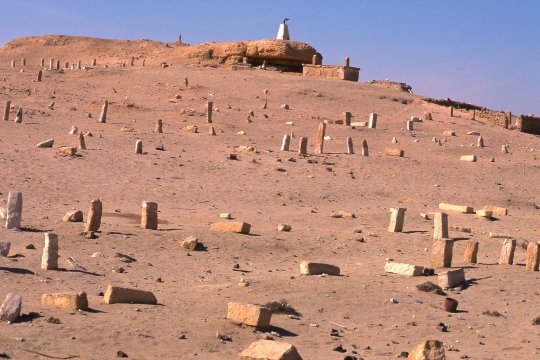 |
| .217. Muslims face the Holy City of Mecca when they pray, and when they die they are buried faing in the same direction, usually with the simplest of grave markers. (Cemetery at Siwa) |
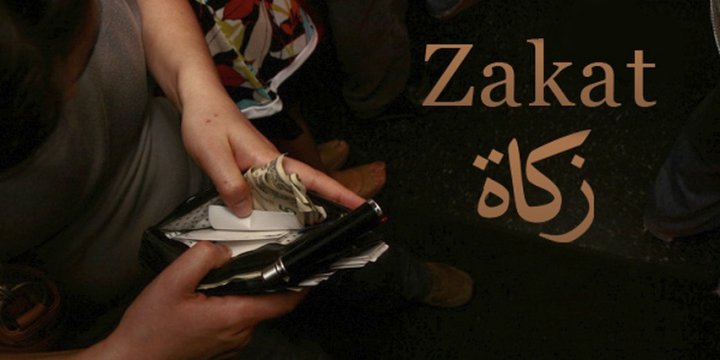 |
| .219. The giving of alms (zakat) is said by modern Muslims to be a pillar of social action. Followers of the Prophet are expected to share with those who are poor and needy but equally part of the worshipping community and equally precious in the eyes of God. The Sharia stipulates how much should be given in each category of one’s possessions. (Courtesy: blog.justgiving.com ) |
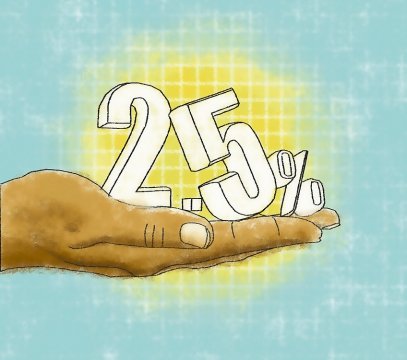 |
| .220. Contemporary practice has settled on an annual rate of 2.5% of one’s profits. Giving is believed to atone for sins that are motivated by self-centredness and irresponsible stewardship of one’s possessions: and most Muslims give more than the amount specified. (Courtesy: dompetdhuafa.org.au ) |
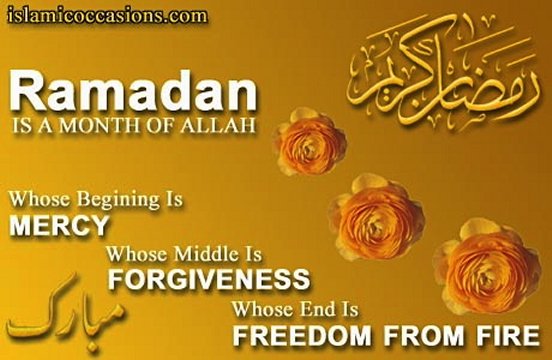 |
| .221. The fourth pillar, Ramadan, -- when Muslims fast between sunrise and sunset during the ninth month of their year -- celebrates God’s gift of the Koran. Pious Muslims will not allow anything to pass their lips, not even water -- though exceptions are made for expectant and nursing mothers. (Poster courtesy: ezsoftech.com ) |
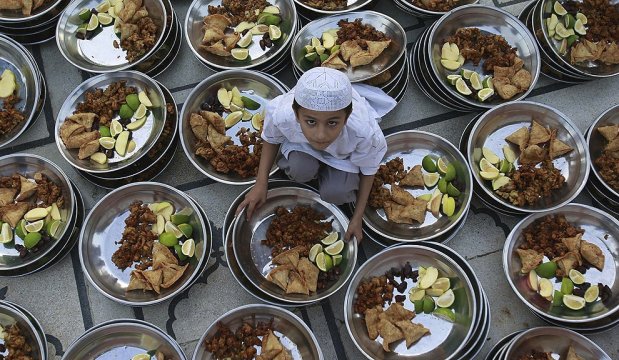 |
| .222. Those who are both pious and wealthy may provide food for the poor to eat during the feast, which ends each day’s fast. (At the opposite end of the spectrum, though, are some who eat all night, and get up late so they have few hours of fasting to observe!) (Boy prepares food for the evening’s breaking of the fast at: acelebrationofwomen.org ) |
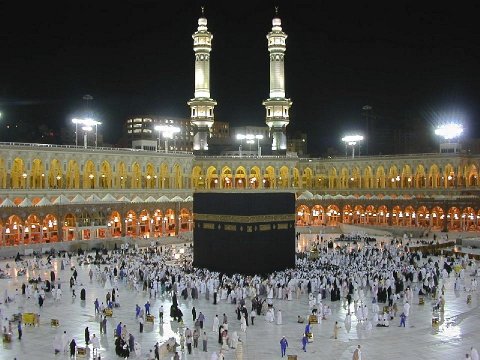 |
| .223. All Muslims are required to complete their haj to the Holy City of Mecca at least once in their lives, if they can afford it. For those who cannot afford to go, there are charities in some countries that help with fares: and if a person is unable to go during their lifetime, a brother or son may later satisfy this requirement on behalf of the deceased. (Pilgrims at the Holy Kaaba in the heart of Mecca courtesy: mysticalnumbers.com ) |
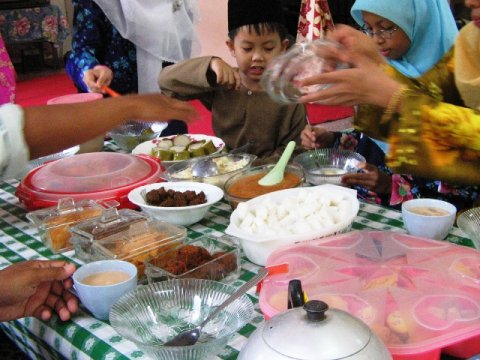 . . |
| .225. The principal holidays in Muslim countries are Eid al Fitr that celebrates the end of the fast of Ramadan, and Eid al Adha (“The Feast of Sacrifice”) which marks the end of the annual haj. (Feast of Eid al Fitr in Malaysia courtesy: Wikipedia ) |
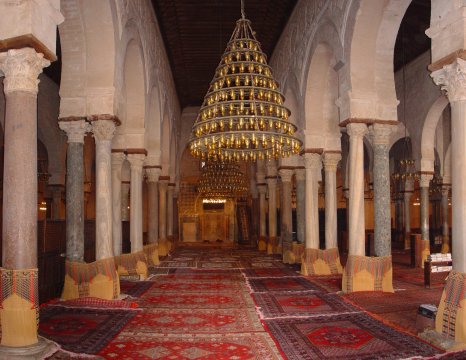 |
| .228. The inside walls of the mosque will be decorated with arabesque patterns and verses from the Koran (but no images of living things since it is believed that an object and its image are magically united). And at the end of the prayer hall there will be a decorated alcove or niche (the mihrab) indicating the direction of Mecca, which people must face when they pray. (Prayer Hall of the Great Mosque in Kairouan showing the minrab at the end of the nave, courtesy: Wikipedia ) |
..
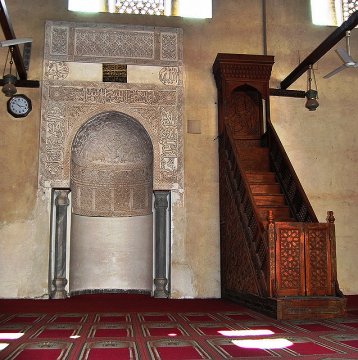 |
| .229. Islam has no priests as such or hierarchy of bishops and archbishops. Imams (in some cases sheikhs) are the closest one gets to a priest, since they are schooled in Islamic law and give the sermon (the khutba) on Friday ... from a wooden pulpit (or minbar) beside the mihrab. The traditional Muslim greeting is “as salaam alaykum” (“Peace be upon you)” to which the reply is “wa alaykum as salaam” -- “And upon you be peace.” (Mihrab and minbar in the Amr Ibn Al-as mosque in Cairo courtesy: farm4.staticflickr.com ) |
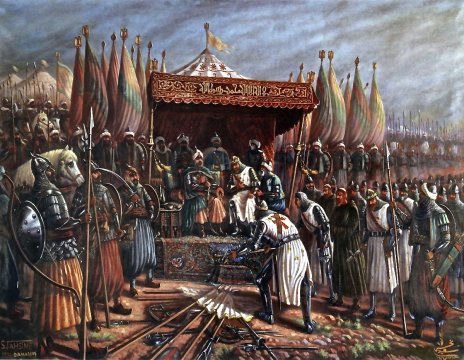 |
| .230. In spite of the absence of any central authority comparable with, say, a Catholic Pope; and in spite of the bitterness and bloodshed that has set Sunnis against Shi’as, the power of Islam is such that the conversion of a Muslim to Christianity can be both difficult and dangerous. Besides being a religion and way of life it is a philosophy, a culture and a civilization. (Modern painting celebrating the victory of Saladin over the Christians at Hattin in 1187 courtesy: Wikipedia ) |
![]()
Text and photos by John Tyman
unless otherwise indicated.
Intended for Educational Use
Only.
Contact Dr. John Tyman at johntyman2@gmail.com
for more information regarding
licensing.
![]()
www.hillmanweb.com
Photo processing, Web page layout,
formatting and hosting by
William
Hillman ~ Brandon, Manitoba ~ Canada